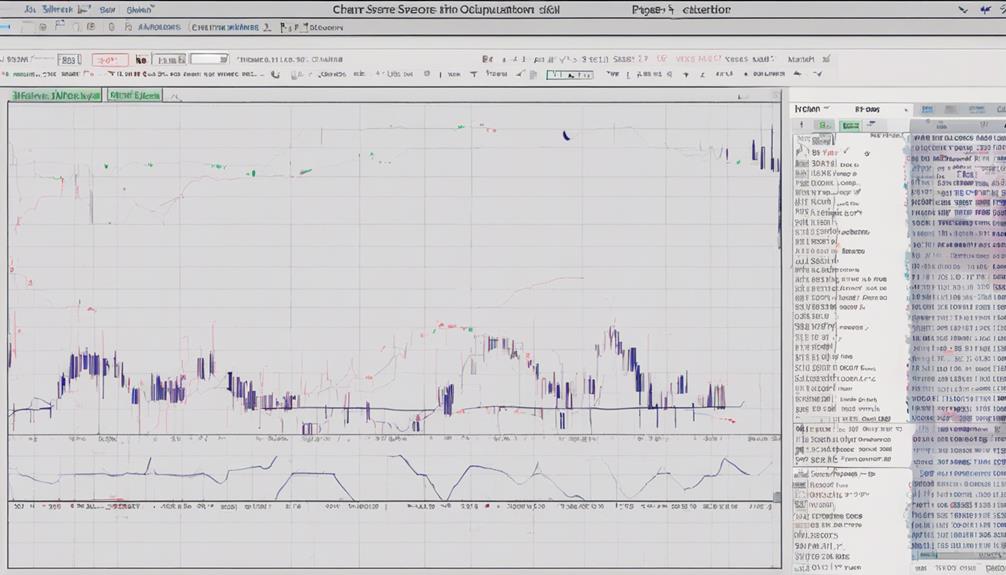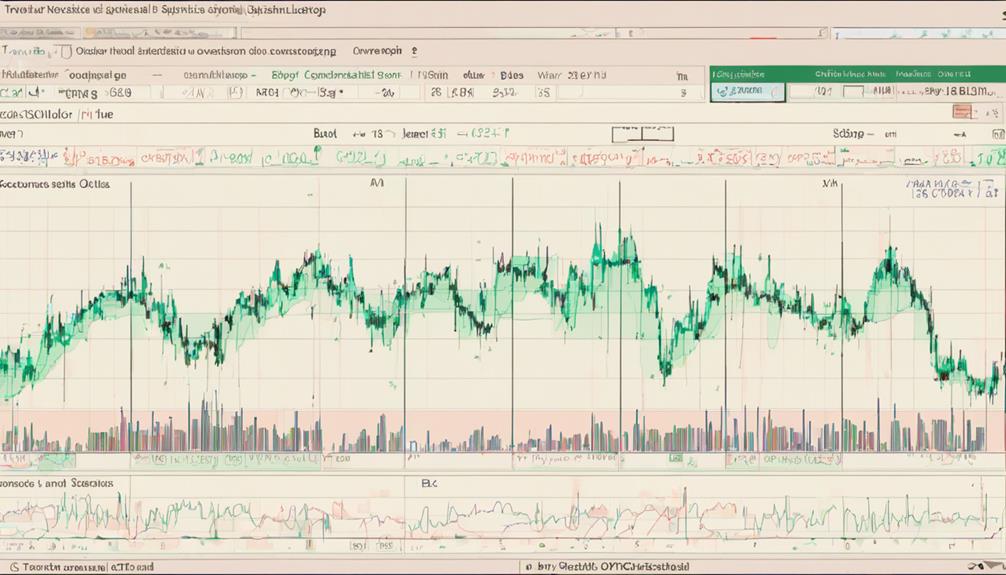Are you looking to optimize your Stochastic Oscillator setup for better trading decisions?
Understanding the key parameters and signals can significantly impact your strategy.
By mastering these three essential tips, you'll enhance your ability to identify market conditions and potential trends.
Stay tuned to uncover valuable insights that can elevate your trading game.
Optimal Parameters for Stochastic Oscillator
When setting up your Stochastic Oscillator, selecting the optimal parameters is a critical step in ensuring accurate signal recognition aligned with your trading objectives. The choice of settings like 14, 3, 3 for a standard setup or variations such as 5, 3, 3 or 21, 5, 5 is crucial.
Short-term traders often benefit from lower settings like 5, 3, 3, as these provide more sensitive and early signals suitable for their fast-paced trading style. On the other hand, long-term traders may prefer higher settings like 21, 5, 5, which offer smoother signals and are favored for capturing major price changes.
It's essential to align these parameters with your trading strategy to ensure you receive accurate signals that meet your specific trading goals.
Setting Up Timeframes for Analysis

Select appropriate timeframes for analysis based on your trading style and objectives to effectively utilize the Stochastic Oscillator in your market assessments.
For intraday trading, consider shorter timeframes like 5 or 15 minutes to capture swift market movements.
If you engage in swing trading or position trading, opt for longer timeframes such as daily or weekly to identify trends and reversals more accurately.
Combining multiple timeframes provides a holistic view of market dynamics, aiding in spotting potential reversals.
Adjust the timeframe settings according to your preferred trading style and the level of detail required in your analysis.
Experiment with different timeframes to discover the optimal setup that best suits your trading strategy and goals.
Interpreting Stochastic Oscillator Signals

To effectively interpret Stochastic Oscillator signals, focus on identifying overbought and oversold conditions, signal crossovers, and divergences indicating potential market reversals. Stochastic Oscillator readings above 80 suggest overbought conditions, while values below 20 indicate oversold levels. Buy signals are generated when the %K line crosses above the %D line, signaling potential market entry points. Conversely, sell signals occur when the %K line crosses below the %D line, indicating potential exit opportunities.
It's crucial to pay attention to divergences such as bullish and bearish divergences, as they can foreshadow market reversals. Incorporating moving averages can enhance the accuracy of signals provided by the Stochastic Oscillator indicator. Setting stop-loss orders is essential to manage risk when trading based on Stochastic Oscillator signals.
How Can I Use the Stochastic Oscillator for Binary Options Trading?
The stochastic oscillator is a popular technical analysis tool used in binary options trading. It helps traders identify overbought or oversold conditions in the market, leading to potential reversal points. By analyzing the stochastic oscillator, traders can make more informed decisions on when to enter or exit binary options trades.
Frequently Asked Questions
What Is the Best Setting for Stochastic Oscillator?
For the best Stochastic Oscillator setting, consider parameters such as 14, 3, 3 or 21, 5, 5 for balance. Short-term traders may prefer 5, 3, 3 for quick signals, while long-term traders might choose 21, 9, 9 for smoother indications. Tailor settings to your trading style and market conditions.
What Is Stochastic 14 3 3?
Stochastic 14 3 3 entails default parameters – 14 periods for %K, 3 periods for %D, and a smoothing factor of 3. It's a common setting in trading platforms for analyzing price momentum and overbought/oversold conditions. Adjust to fit your style.
What Is the 4 Hour Stochastic Strategy?
You trade like a pro with the 4-hour Stochastic strategy, capturing medium-term trends effectively. It helps you dodge market noise and false signals, identifying entry and exit points with precision. Patience and discipline are key for success.
What Is the Best Time Period for Stochastic Oscillator?
For the Stochastic Oscillator, the best time period is commonly set at 14 periods for standard settings. Shorter periods like 5 or 7 offer rapid signals, while longer ones such as 21 or 30 provide smoother trends. Adjust based on market conditions and your trading style.
Conclusion
In conclusion, mastering the Stochastic Oscillator requires attention to several key aspects:
- Overbought and oversold conditions
- Entry and exit signals
- Divergence analysis
By applying these essential tips, you can enhance your trading strategies and make more informed decisions in the market. Remember, success in trading lies in understanding these key principles and utilizing them effectively.
So, keep analyzing, keep learning, and keep improving your skills to achieve your trading goals.
